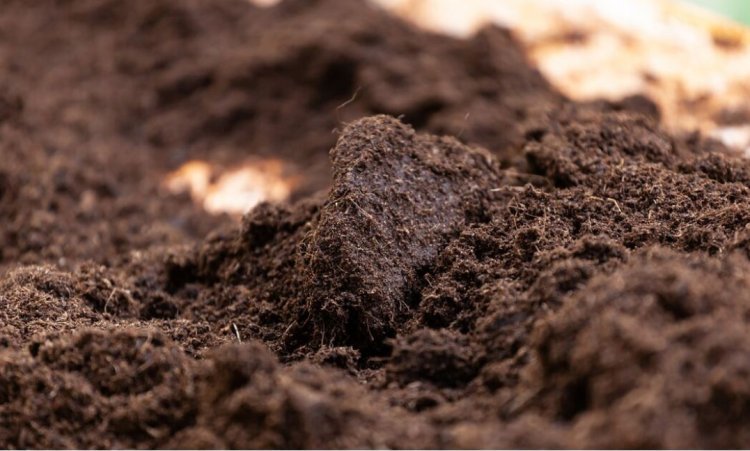Why Topsoil is Important for Your Garden
Why Topsoil is Important for Your Garden? Learn all you need to know

Gardening is a beloved pastime for many, providing not only beauty and food but also a connection to nature. But have you ever wondered what lies beneath the surface that makes your garden thrive? That's where topsoil and topsoil suppliers come into play. Let’s dive into why topsoil is crucial for your garden's success.
What is Topsoil?
Topsoil is the uppermost layer of soil, typically the top 5-10 inches, where most of the biological soil activity occurs. It’s rich in nutrients, organic matter, and microorganisms, making it the most fertile part of the soil profile.
Composition: Topsoil is made up of a mix of sand, silt, clay, and organic matter. This composition can vary, affecting the soil's texture and fertility.
Formation: Topsoil forms over hundreds to thousands of years through the breakdown of organic materials and the weathering of rocks. This slow process highlights the importance of preserving this precious layer.
The Role of Topsoil in Gardening
Nutrient Supply: Plants rely on topsoil for essential nutrients like nitrogen, phosphorus, and potassium. These nutrients are critical for plant growth, flowering, and fruiting.
Water Retention: Good topsoil has the ability to retain moisture, ensuring that plants have a consistent water supply, which is crucial during dry spells.
Aeration: Topsoil allows air to circulate around plant roots, providing the oxygen necessary for root respiration and healthy plant growth.
Benefits of Using Quality Topsoil
Enhanced Plant Growth: High-quality topsoil provides a fertile environment, leading to healthier plants that grow faster and produce more flowers and fruits.
Improved Soil Structure: Quality topsoil improves the soil structure, making it easier for roots to penetrate and access nutrients and water.
Increased Microbial Activity: Good topsoil is teeming with beneficial microorganisms that help break down organic matter, releasing nutrients that plants can absorb.
How to Identify Good Topsoil
Texture: Quality topsoil should be crumbly and light. If it feels sticky or hard, it might have too much clay or be compacted.
Color: Dark brown or black topsoil indicates a high organic matter content, which is ideal for gardening.
Smell: Healthy topsoil has a fresh, earthy smell. A sour or foul odor can indicate poor drainage or contamination.
Topsoil vs. Subsoil
Differences: Topsoil is rich in organic matter and nutrients, whereas subsoil, found below the topsoil, is denser and lower in organic content.
Importance of Each Layer: While topsoil is crucial for plant health, subsoil provides support and can affect drainage and root depth.
How to Improve Your Garden’s Topsoil
Adding Organic Matter: Incorporate compost, manure, or leaf mold to enhance nutrient content and soil structure.
Mulching: Applying mulch helps retain moisture, regulate soil temperature, and reduce erosion.
Cover Cropping: Planting cover crops like clover or rye can add organic matter and improve soil fertility when tilled back into the soil.
Common Problems with Topsoil
Erosion: Wind and water can strip away topsoil, leading to nutrient loss and poor plant growth.
Compaction: Heavy machinery or foot traffic can compact topsoil, reducing aeration and water infiltration.
Contamination: Pesticides, heavy metals, and other pollutants can contaminate topsoil, harming plant health.
Preventing Topsoil Erosion
Planting Ground Covers: Ground covers protect the soil from erosion by anchoring it with their roots.
Building Terraces: Terracing helps reduce soil erosion on slopes by breaking up the flow of water.
Using Mulch: Mulch acts as a protective layer, preventing soil erosion and retaining moisture.
Topsoil and Climate Change
Carbon Sequestration: Healthy topsoil can capture and store carbon, helping mitigate climate change.
Mitigating Floods: Topsoil with good structure can absorb heavy rains, reducing the risk of flooding.
Sourcing Quality Topsoil
Local Nurseries: Local nurseries often provide topsoil suited to your region’s specific needs.
Online Suppliers: Reputable online suppliers can offer a wide range of topsoil options delivered to your door.
DIY Methods: Creating your own topsoil through composting and amending your existing soil can be cost-effective and rewarding.
Cost of Topsoil
Factors Affecting Price: The cost of topsoil can vary based on factors like quality, location, and delivery fees.
Budget-Friendly Tips: Buying in bulk, sourcing locally, and improving your existing soil can help reduce costs.
Topsoil in Different Climates
Adaptations for Arid Regions: In dry areas, incorporating organic matter and using mulch can help retain moisture.
Considerations for Tropical Gardens: In tropical climates, managing excess water and promoting drainage are key.
Tips for Temperate Zones: In temperate regions, regular soil testing and amendments can maintain topsoil health.
Topsoil and Sustainable Gardening
Organic Practices: Using organic fertilizers and pesticides can maintain soil health and prevent contamination.
Reducing Chemical Use: Minimizing chemical inputs helps preserve the natural soil ecosystem.
Promoting Biodiversity: Diverse plantings can support a healthy soil microbiome and improve soil structure.
Conclusion
Investing in quality topsoil is one of the best things you can do for your garden. It provides the foundation for healthy plants, improves soil structure, and supports a vibrant ecosystem. By understanding the importance of topsoil and taking steps to maintain and improve it, you can enjoy a thriving garden year after year.
FAQs
What is the difference between topsoil and garden soil?
Topsoil is the natural, nutrient-rich layer of soil on the surface, while garden soil is often a mix of topsoil and other materials like compost and fertilizers designed for planting.
How often should I replace my garden’s topsoil?
Topsoil doesn’t usually need to be replaced frequently. Instead, focus on amending it with organic matter regularly to maintain its health and fertility.
Can I make my own topsoil?
Yes, you can create your own topsoil by composting organic materials like kitchen scraps and yard waste, then mixing it with your existing soil.
What's Your Reaction?











![Wireless Connectivity Software Market Size, Share | Statistics [2032]](https://handyclassified.com/uploads/images/202404/image_100x75_661f3be896033.jpg)




